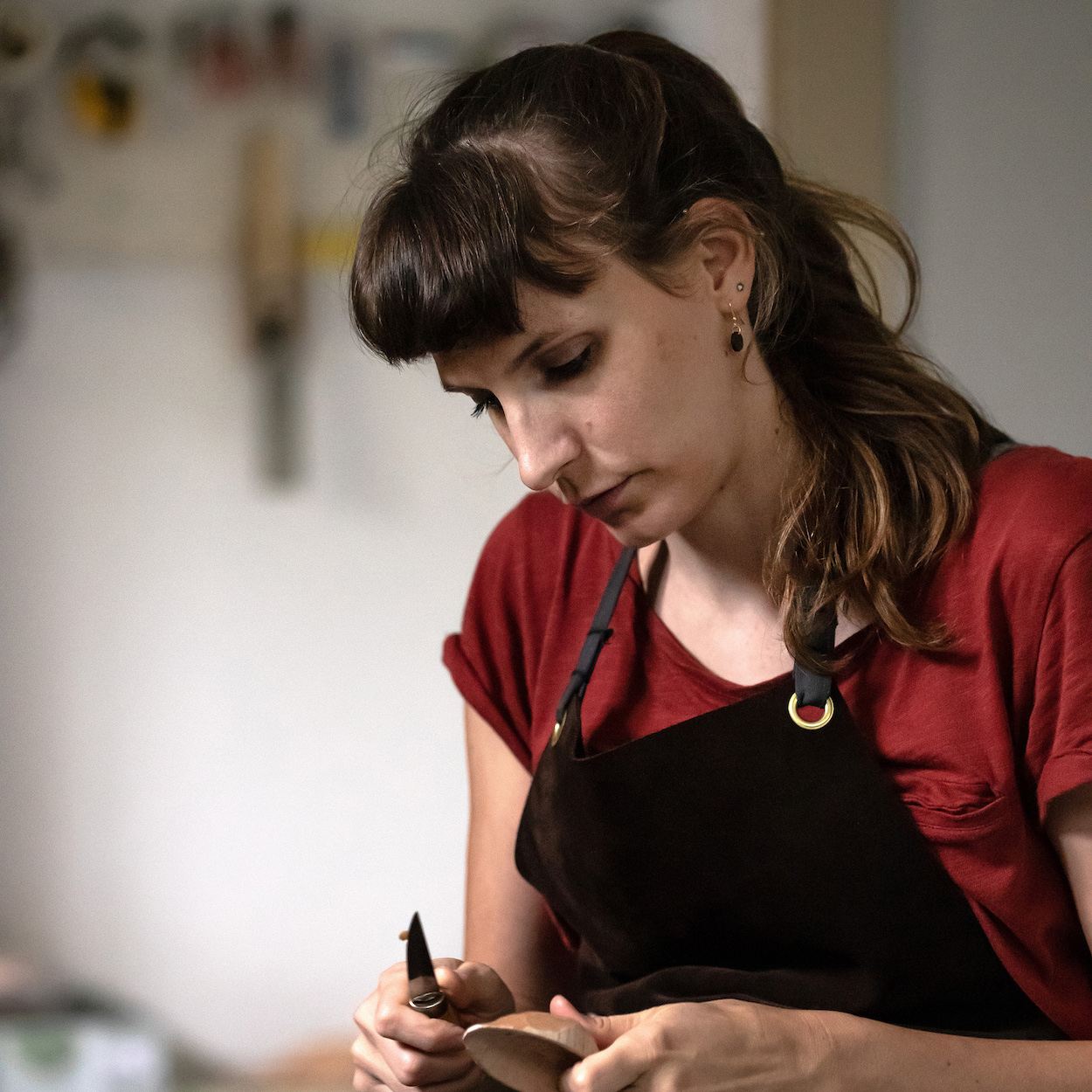
Patrizia Keller
Patrizia Keller is a wood artist and spoon carver living and working in Switzerland. She finds her inspiration in nature, in the mountains and forests, where she often collects the material for her objects. Her work explores the functionality of an object, with the question of how far she can alienate the raw natural material, while trying to find the perfect balance between a coherent form and the beauty of purity.
If you had access to all the powers, how would you improve the world?
I would like people to think more outside the box. Not only in relation to my work or that of another artist, which object should bring which concrete function, but also in life in general. People should get a longer-term thinking about what they want and what still makes sense for them in 5, 10, 20 years. If I were given this “infinite power” I would like to do something against today’s fast pace, against this consumerism and the short-sightedness of people. I would like to encourage people to make conscious decisions, everyone should be clear about what their task is, in any case, the goal is not to increase wealth, nor is it simply to look after oneself.
What are the biggest sustainability challenges in your work and how are you addressing them?
Wood is a beautiful natural material, but it can have its pitfalls. It has uneven growth directions (grain), knots, flaws, can be rotten or infected by a fungus. All these parts are usually removed in carpentries and are ending as firewood. It is precisely this kind of wood, or wood that has fallen down in a storm, that I would like to breathe life into again. I do this by deliberately incorporating such defects and thus emphasising the naturalness and uniqueness of each piece of wood. So I try to create products with natural materials, which otherwise at best serve as fuel. These products are durable and I care for them to give them a long life.
Which conscious lifestyle choices are you making? And are you considering any new ones?
I try to reduce my consumption more and more, which means I buy less and less products for the everyday life and consciously choose certain products with high, long-lasting quality, products that have been produced locally and with care, and products made from natural materials that have been produced in an environmentally conscious way. I grow my own vegetables in my garden or forage wild food, preserve it and I can benefit from it practically all year round. In addition to the everyday objects I create of wood, I produce many products for the everyday life by myself, be it cleaning agents made of vegetable kitchen waste or natural cosmetics, etc. My goal is to move more and more in the direction of self-sufficiency, as far as this is possible in my environment. I can still learn a lot in many areas and do my share to live a more sustainable life. I want to create a healthier and more sustainable future for people and our planet.
What have you rebelled against in the past, and what are you rebelling against now?
I think I am not a rebellious person, I am rather calm and balanced. I just want to do what I love. I like to follow my own way and let others go theirs. I see myself more as a motivation and/or inspiration for other people to think outside the box and look at the world in a different way.
Do you think cutlery can still be improved? If yes, in what way?
I don’t know if “improvement” is the right word here, but yes, I think that the design, materials and therefore functionality of cutlery can certainly be further explored. New materials are constantly being invented and discovered, which fulfil new purposes and can therefore be used differently.
What was the inspiration for your Steinbeisser pieces?
I find my inspiration in nature, in the mountains and forests, this is also the place where I collect the material for the pieces. In one series I deal with the question of the functionality of an object but by preserving the raw and pure beauty of nature. In the other series I ask myself the question of how we eat and what the digestion of the human body does when we eat. I emphasize these questions by alienating the familiar shape of the cutlery.
Describe your work in 3 words!
Connected. Raw. Digestion.
What kind of materials do you use and where do you get them from?
I often collect my material in the local forest. I am fascinated by dead wood which shows traces of life, such as feeding traces of animals or the spalting of a piece of wood.
What has been your favorite dinner experience?
I love to cook, to surprise and to treat my guests with some delicious food. I hope I could already conjure an unforgettable experience on the table for some of my guests.
What excites you about tomorrow?
In this current, difficult time we are now living in I am rather calm and prudent. I am observant and see how the situation changes and let myself be surprised. It’s always good that we don’t know what comes tomorrow, this makes life exciting.